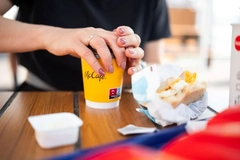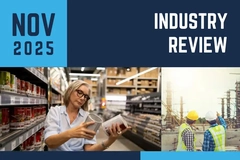
- Industry news
Industry news
- Category news
- Reports
- Key trends
- Multimedia
Multimedia
- Journal
- Events
- Suppliers
Suppliers
- Home
- Industry news
Industry news
- Category news
- Reports
- Key trends
- Multimedia
Multimedia
- Events
- Suppliers
Suppliers
Keeping plastics in play: Sealed Air invests in chemical recycling pioneer

14 Aug 2020 --- Sealed Air has signed a collaboration agreement with advanced chemical recycling technology company Plastic Energy to transform how packaging is viewed and eliminate its waste. Toward this end, Sealed Air has made an equity investment of US$2.5 million in Plastic Energy Global, the parent company of Plastic Energy. The latter’s Thermal Anaerobic Conversion (TAC) technology process complements mechanical recycling as part of the circular economy by reducing the need for incineration or landfilling.
Experts from both companies provide PackagingInsights with a fuller image of how this partnership is projected to demonstrate the commercial and technical viability of circular loops for flexible plastic packaging.
“In the long term, advanced recycling technologies, such as Plastic Energy’s TAC technology process, provide an essential link in the chain we must build to recover and remake essential packaging materials after use,” says Dr. Ron Cotterman, Vice President, Innovation and Sustainability at Sealed Air.
“Packaging after use is converted into components that are converted into new resins. These new resins are used to make packaging that protects our customers’ products. After the need for that protection is complete, that packaging re-enters the chain again. This is what we call ‘creating micro-circular’ loops – a promising means to eliminate plastic waste by ‘keeping the plastic molecules in play,’” he continues.
During the TAC process, plastic waste is heated with the absence of oxygen until it melts and the polymer molecules break down to form a rich, saturated hydrocarbon vapor. “As a result of this TAC process, the condensable gases are converted to hydrocarbon products creating an optimal recycled oil that we call TACOIL. We sell the TACOIL to the chemical industry to replace fossil oil in creating virgin-quality plastics,” explains Cloé Ragot, Head of Policy and Sustainability at Plastic Energy.“It is a great sign of hope that this mechanism has been found,” says renowned natural scientist Sir David Attenborough, commenting on Plastic Energy’s TAC process.
Petrochemical company SABIC used Plastic Energy’s TACOIL to produce the Certified Circular Polymers that have been incorporated into packaging for multiple Unilever products, including Magnum ice cream and Knorr stock pots, as well as Mondelez’s Philadelphia cream cheese and other products from Tupperware, Vinventions, and the Walki Group.
Aligning with the right partner
The main aims of this investment are to support the development of chemical recycling and Sealed Air’s 2025 environmental sustainability pledges, Ragot continues. “To achieve this pledge, we are designing our innovative packaging solutions to be 100 percent recyclable and to contain 50 percent recycled content. [The pledge should also] accelerate the development of end-to-end solutions and collaborations with partners worldwide to increase recycling and reuse rates and eliminate waste,” Dr. Cotterman adds.
Sealed Air states it thoroughly assessed potential collaborators and chose Plastic Energy because its mission and vision align with Sealed Air’s priorities, namely investing in innovation, eliminating waste and collaborating for change.
“Beyond working with the value-chain and collaborating with global companies to develop the chemical recycling industry, we also stand out from our competitors in our operational experience. For the past three years, we have been operating two commercial plants in Spain 24 hours a day for more than 320 days per year. Having the plants in constant operation has enabled us to improve our product quality and work with partners to develop the pipeline for more upscaled next-generation projects,” Ragot affirms.
Chemical recycling complements mechanical recycling in the general effort to recycle end-of-life plastics (Credits: Plastic Energy).“We will combine our expertise in plastics, packaging design and recycling technology with our supply chain collaborators to demonstrate beneficial outcomes that meet economic, environmental and societal needs. We intend to play a leadership role in this space and as we work to solve this critical challenge, we will communicate outcomes with others,” Dr. Cotterman maintains.
Chemical versus mechanical recycling
PackagingInsights’ inquiries with leading research institutes and industry experts have revealed that the problem is not necessarily with plastic but its end-of-life disposal. Moreover, research suggests that the plastic pollution problem could be solved within a generation, if policymakers, investors, businesses and political leaders can collaborate on a large scale.
“Chemical recycling complements mechanical recycling in the general effort to recycle end-of-life plastics. Mechanical recycling and chemical recycling focus on different types of plastic waste and create different output products, so the two will have their own markets,” Ragot details.
“Chemical recycling targets plastics that are considered difficult or economically untenable to recycle for mechanical recyclers. This is typically the case for multilayer packaging and flexible packaging. Similarly, chemical recycling responds to a demand for virgin-quality recycled content that for some products, mechanical recycling cannot necessarily reach,” she adds.
Sealed Air has made efforts with other collaborators to demonstrate circularity for specific packaging types for food applications. “We are effectively balancing the essential role packaging plays, the ability to create material flows and the value derived by maximizing performance and product protection,” Dr. Cotterman concludes.
By Anni Schleicher











